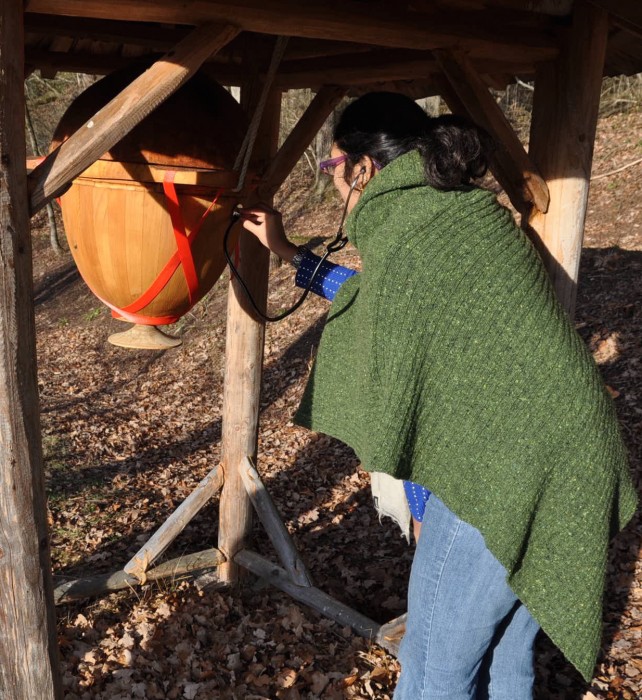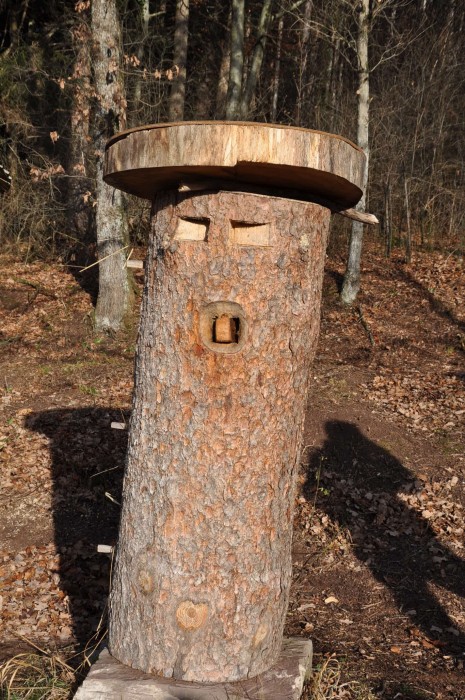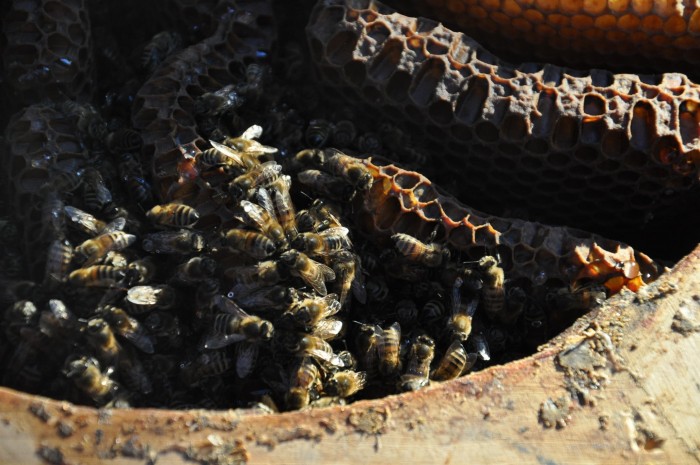In responding to Eduardo Kohn’s recent scholarship on How Forests Think, Bruno Latour has written:
The test is still to come: how could an ethnographer … equipped with such a philosophical anthropology find ways to make his or her ontological claims understood in negotiating what a forest is made of, when faced with forestry engineers, loggers, tourists, NGOs, or state administrators? (2014: 265–266)
Indeed, I wonder the same thing. How might anthropology’s recent “posthuman” and “multispecies” turns be useful? These ontologically inspired theories elegantly dismiss the duality of nature/culture and hold forth a vision of symmetry in the world, yet doing so, as Lucas Bessire and David Bond have argued, is an “unmoored form of speculative futurism” that sidesteps the political and historical realities of life (2014: 441). So I wonder, in politically and historically forged spaces, how can these theories be made useful? Exploring the practical value of anthropology’s recent posthuman/multispecies approaches in politically charged agricultural border zones, such as to aid the honeybee populations who face dire global collapse, is precisely what I wish to do.
My purpose here is to share my research question—that nagging puzzle which continuously brings me back to anthropology. This is a puzzle of how to take others seriously, whether they are human or not, whether they are visible or not. It is a question of conducting useful translation between worlds that appear different (such as “nature” and “culture”). And I believe it is the same question as to whether the posthuman turn can be used to foster spaces of negotiation between bees, beekeepers, bee scientists, governments, the agro-industrial lobby, and the rest of us.
I start personally, because I am sure that the seeds of thoughts, the beginnings of all research, find their entrances so. I have come to anthropology deliberately, because I believe anthropology’s particular way of listening—what has been called anthropology’s practice of researching “with” (e.g., Ingold 2007)—can help me find the solutions I am seeking. These “solutions” would be practical ways of approaching a question that has sat with me for years before I ever dreamt of studying anthropology: a puzzle, simply put, of translation, related to what Latour calls the “diplomatic dimension of contemporary ethnography” (2014: 263).
With my cultural “halfie” (Abu-Lughod 1991) or perhaps “thirdie” upbringing between India, America, and Singapore, this question first arose in primary school, where I soon found myself continuously describing and making sense of my world, or maybe my worlds—the same one(s) I shared with others—to others. My daily crossing over thresholds, which encouraged me to make sense and translate, sometimes morphed into experiencing life as lived on the brittle lines of movement between worlds: a seventh-grade journal entry of mine describes living only the circular lines on a Venn diagram rather than entering into its spheres—not so far from Deleuzian “lines of flight” (1987) and Ingoldian “meshworks” of life (2011). I imagine this is a fairly common experience in these globalized days.
What is interesting here is that these “cultures” did not—and still do not—feel in conflict to me, or even like separate concepts, until I started describing or explaining them to others. In the process of meeting others arose a disruption. For example, there was a fairly harmonious coexistence among members of my immediate family between what others referred to as “science” and the gods on our altar—so harmonious that I would not have even termed it a “co-existence” until I noticed that this did not hold for every other person I encountered. This is where my research question started forming, for the same continued in my intellectual-spiritual pursuits. I studied physics and loved the practice of mathematics—and, contrary to the cordoning off of “science” as a distinct domain of practice that the very birth of an STS literature bares evidence to—I did not experience doing physics as inherently different from reading the portraits of life that Tim Ingold or Gregory Bateson painted, nor did I experience it as “something different” from communicating with unseen beings—unless, of course, I was explaining or putting any of this into words. It is from all these personal experiences that my research question arises, and it is the nature of the question that makes me turn to anthropology.
My research question is about the task of translation, which seems necessary when confronting the complexities of everyday life, between what appear to be distinct realms of being. That is, it is insufficient for anthropology to obfuscate a nature-culture dichotomy or make apparent the fallacy of a materialism-spiritualism binary when the modus operandi of the complexity of worlds we inhabit continues to use them. What is necessary, instead, is to heed Donna Haraway’s invitation “to become worldly and respond” (2008: 41). And in this becoming worldly and responding to seemingly different realms of being, I believe that what Latour has identified as anthropology’s role in diplomatic “negotiation” (2013: 12) is necessary. And finally, if anthropology can be helpful in negotiating, then perhaps anthropology’s recent posthuman turn may prove useful.
I am asking how we can take seriously the unseen in a way that is dialoguable, communicable, and comprehensible for a mainstream scientific opinion. To what extent can anthropologists negotiate the taking-seriously of other-than-humans so that it is practically useful for the future of this planet and all life? To illustrate my research question using a fairly polar example, what would it look like to open up a space where a researcher or senior executive working in Monsanto might authentically encounter the Great Spirit of the Beehive—perhaps what German anthroposophic beekeepers call “Bien”—and how could such an interchange affect the kind of work that an agricultural scientist or entomologist might produce?

I am interested in facilitating spaces of negotiation between all sorts of beings, and I am keen to explore what anthropology has to offer here. The reason I couch my project within the posthuman turn is that the posthuman turn also directs our attention to issues—human–animal relations and human–environment relations, for instance—that offer ripe, open, and highly contested spaces for negotiation. The honeybees show us why.
The honeybees present a complex and urgent problem. Bees are dying, of course, but there is also a plethora of (very human) power relations surrounding bees. Honeybees are impacted by US military and defense research (Kosek 2010), industrial farming, and biopolitics (Nimmo 2015), and the continued hegemony of scientific knowledge over beekeepers’ lived knowledge in government policy (Kleinman and Suryanaranan 2012a, 2012b). The bees imply that taking them seriously (i.e., engaging with science and politics while simultaneously involving the bees themselves and the posthuman anthropological turn) will involve negotiating across epistemological boundaries. Some of these spaces of negotiation—and some of the worlds that need entering—involve spiritual beekeeping.
Certain beekeepers take the bees’ perspective very seriously. Anthropologists Kelsey Green and Franklin Ginn, following fieldwork with natural beekeepers in England who are inspired by Rudolf Steiner’s spiritual philosophy and specifically his lectures on beekeeping ([1923] 1998), explain that their respondents, “instead of merely wanting to ‘save the bees,’ suggest that if we attend to them closely, if we are willing to address and be addressed by the bee, we might get the feeling that the bees have some answers from their own alien realm to give us” (2014: 164). Some biodynamic beekeepers I have met in Germany are also very interested in listening to what their bees have to say. As I once read on the UK Natural Beekeeping Trust’s website, “now is the time for the bee to speak and for us to listen.” Indeed, many beekeepers’ orientations to their bees are highly resonant with anthropology’s posthuman turn, which suggests to me that the theoretical literature may be valuable in negotiating spaces between beekeepers and, say, the pesticide or agro-industrial lobbies—or, even better, negotiating spaces between bees and these lobbies.

In creating his online-offline project, An Inquiry into Modes of Existence, Bruno Latour asks how anthropologists can be diplomats for scientists (2013). Borrowing from him, I ask here, “How can I be a diplomat for the bees?” Of course, in some ways, such a project is slightly more “one-way.” I cannot negotiate with the bees in the same way that an anthropologist can with scientists, beekeepers, or human others. Or can I?
How might one negotiate with bees? If the bees do have something to tell us, then how might we listen to them?
Last December, I went down to Lancaster, England, for an end-of-project workshop. The “Dark Matters” project has grown through an interdisciplinary collaboration between a physicist, an artist, and a social scientist, and the workshop probed at thresholds of (im)perceptibility across art, cosmology, and the anthropology of science. As I listened to various talks that explored the imperceptible that day, I heard one speaker suggest that we have far more senses than we are aware of: apparently, recent neuroscience research indicates we have around twenty-something senses—not just five. And I wondered, then, whether expanding sensory awareness and welding that to the phenomenological strain of thought might help in listening to bees.

Whether that option works or something else proves more fruitful, I invite you to consider how you might listen to bees. How can we communicate beyond the human? Do we already do that? As compelling as Eduardo Kohn’s How Forests Think is, I do believe Bruno Latour’s question still holds: how might all these incredibly creative ontological, posthuman theories be used to negotiate in the real world, where there is real difference?
Daksha Madhu Rajagopalan is a Master’s student at the University of Aberdeen, Scotland. Her middle name, madhu, means honey, and she teaches yoga in her spare time. Her previous contribution to this blog was also on bees, and her current research is with biodynamic beekeeping.
All photos in this post are credited to the author.
References
Abu-Lughod, Lila. 1991. “Writing against culture.” Recapturing Anthropology: Working in the Present, ed. by Richard G. Fox. Santa Fe: School of American Research.
Bateson, Gregory. 1972. Steps to an Ecology of Mind. Chicago: University of Chicago Press.
Bessire, Lucas, and David Bond. 2014. “Ontological Anthropology and the Deferral of Critique.” American Ethnologist 41, no. 3: 440–456.
Deleuze, Gilles, and Felix Guattari. 1987. A Thousand Plateaus: Capitalism and Schizophrenia. Minneapolis: University of Minnesota Press.
Green, Kelsey, and Franklin Ginn. 2014. “The Smell of Selfless Love: Sharing Vulnerability with Bees in Alternative Apiculture,” Environmental Humanities 4: 149–170.
Haraway, Donna. 2008. When Species Meet. Minneapolis: University of Minnesota Press.
Ingold, Tim. 2011. Being Alive. London: Routledge, pp. 83–88.
Ingold, Tim. 2007. “Anthropology Is Not Ethnography.” Radcliffe-Brown Lecture in Social Anthropology, Proceedings of the British Academy 154: 69–92.
Kleinman, Daniel, and Sainath Suryanarayanan. 2012a. “Dying Bees and the Social Production of Ignorance.” Science, Technology, & Human Values 38 no. 4: 492–517.
Kleinman, Daniel, and Sainath Suryanarayanan. 2012b. “Be(e)coming Experts: The Controversy over Insecticides in the Honey Bee Colony Collapse Disorder.” Social Studies of Science 43, no. 2: 215–240.
Kohn, Eduardo. 2013. How Forests Think: Toward an Anthropology beyond the Human. Berkeley: University of California Press.
Kosek, Jake. 2010. “Ecologies of Empire: On the New Uses of the Honeybee.” Cultural Anthropology 25, no. 4: 650–678.
Latour, Bruno. 2013. An Inquiry into Modes of Existence: An Anthropology of the Moderns. Cambridge, MA: Harvard University Press.
Latour, Bruno. 2014. “On Selves, Forms, and Forces.” HAU 4, no. 2: 261–266.
Nimmo, Richie. 2015. ‘The Biopolitics of Bees: Industrial Farming and Colony Collapse Disorder.” Humanimalia 6, no. 2: 1–20.
Steiner, Rudolf. (1923) 1998. Bees: Lectures by Rudolf Steiner. Trans. by Thomas Braatz. Great Barrington MA: Anthroposophic Press.
Cite as: Rajagopalan, Daksha Madhu. 2016. “A Research Question: Bees, Theories, and Whether Posthumanism Comes to Matter.” EnviroSociety, 12 April. www.envirosociety.org/2016/04/a-research-question-bees-theories-and-whether-posthumanism-comes-to-matter.

